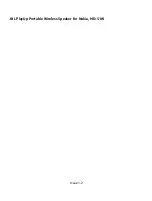
Applying I/Q vector modulation
R&S
®
SMM100A
284
User Manual 1179.1341.02 ─ 05
6
Applying I/Q vector modulation
The R&S
SMM100A offers I/Q modulation with an external analog I/Q signals, external
digital signals, and the internally generated digital signal.
For a description on the signal impairment functionality and settings for applying non-
linear effects, see:
●
Chapter 5.2, "Impairing the signal"
See user manual R&S
SMM-K540, R&S
SMM-K541 Envelope Tracking and AM/AM,
AM/PM Predistortion.
6.1
Required options
The equipment layout for I/Q modulation includes:
●
Frequency option (e.g. R&S
SMM-B1006)
Sufficient for I/Q modulation with external analog signal
6.2
About the I/Q modulator
The R&S
SMM100A offers I/Q modulation with the internally generated digital signal,
the external digital signals (when separately processed), and an external analog I/Q
signal. The maximum available RF bandwidth of externally applied wideband analog
signal is higher than the bandwidths of the internal or external digital signal. For exact
values, refer to the instrument specification (data sheet).
Analog I/Q input signals are directly applied to the analog I/Q modulation circuit, and
are not routed through the baseband section of the R&S
SMM100A.
Defining the input signal of the I/Q modulator
gives an overview of the possible input signals and the connectors they
are supplied at. Any of the specified input signals is processed by the I/Q modulator
and output at the RF output.
Table 6-1: Physical input signals of the I/Q modulator
Input signal
Input connector
GUI parameter
Internal digital baseband signal
-
"I/Q Mod. > I/Q Mod. In > Internal Base-
band I/Q In" and "Baseband > On"
External analog wideband
I/Q
"I/Q Mod. > I/Q Settings > Analog Wide-
band I/Q Input"
External digital signal
CODER
"I/Q Mod. > I/Q Modulator Input > Internal
Baseband" and "BB Input > On"
About the I/Q modulator
















































